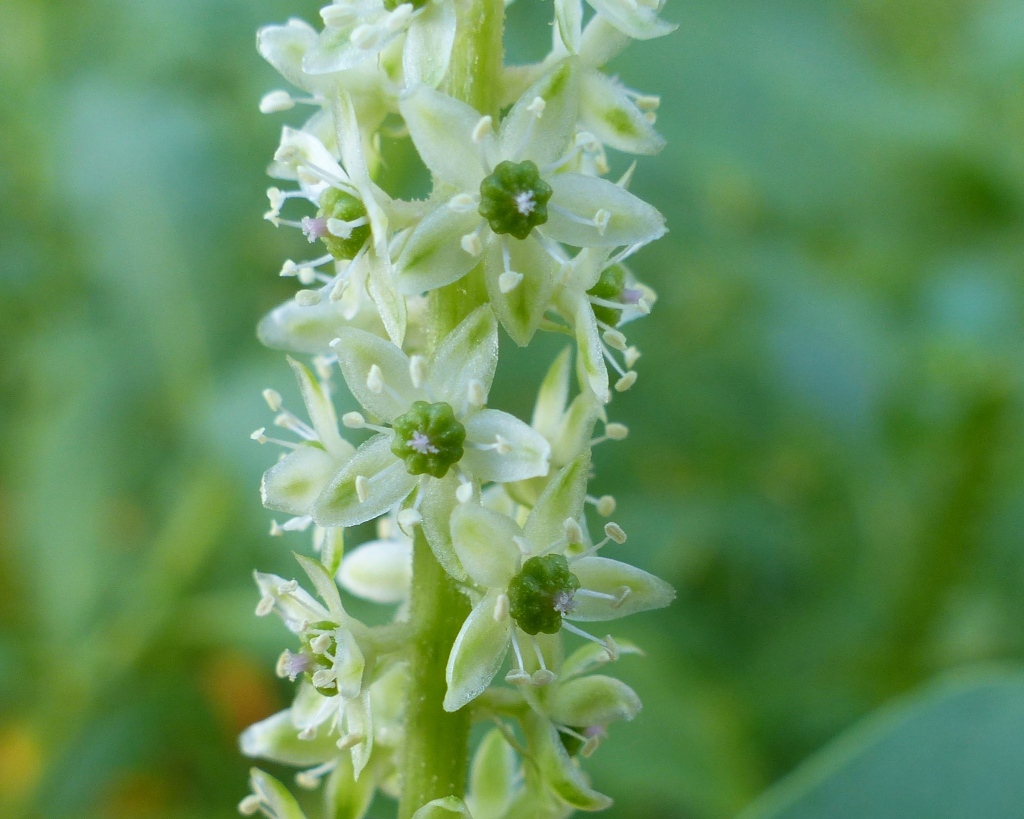Phytolacca octandra
L. Red-ink WeedRank-smelling, glabrous perennial herb or soft-wooded shrub, to c. 2 m high and wide. Leaves petiolate, elliptic or narrowly ovate, to 25 cm long, 13 cm wide (but usually c. 4–10 cm long, 1–3 cm wide). Inflorescence a dense, spike-like raceme, 3–13 cm long (elongating to c. 20 cm in fruit), axis papillate; bracts oblong, c. 2 mm long; pedicels shorter than to subequal to bracts; perianth segments ovate, c. 3 mm long, whitish, green, tinged red, or wholly reddish-purple; stamens 8–10, shorter than perianth; carpels 7–10, fused; styles linear, c. 0.5 mm long, recurved. Berry depressed-globular, 5–9 mm diam., succulent, dark reddish-purple, constricted between the 8 (or fewer by abortion) shining black lenticular seeds, c. 2 mm diam. Flowers mainly Nov.–May.
Wim, GleP, VVP, VRiv, GipP, OtP, Gold, CVU, GGr, NIS, EGL, EGU, HSF, HNF, Strz. Also WA, SA, Qld, NSW. Native to tropical America. Occasional in disturbed sites, wasteland and sometimes intact native communities on soils of low fertility, chiefly coastal (e.g. around Port Phillip Bay, Western Port, Mallacoota), but also near Wangaratta, Maffra and Pomonal.
Walsh, N.G. (1996). Phytolaccaceae. In: Walsh, N.G.; Entwisle, T.J., Flora of Victoria Vol. 3, Dicotyledons Winteraceae to Myrtaceae, pp. 101–102. Inkata Press, Melbourne.
 Spinning
Spinning




